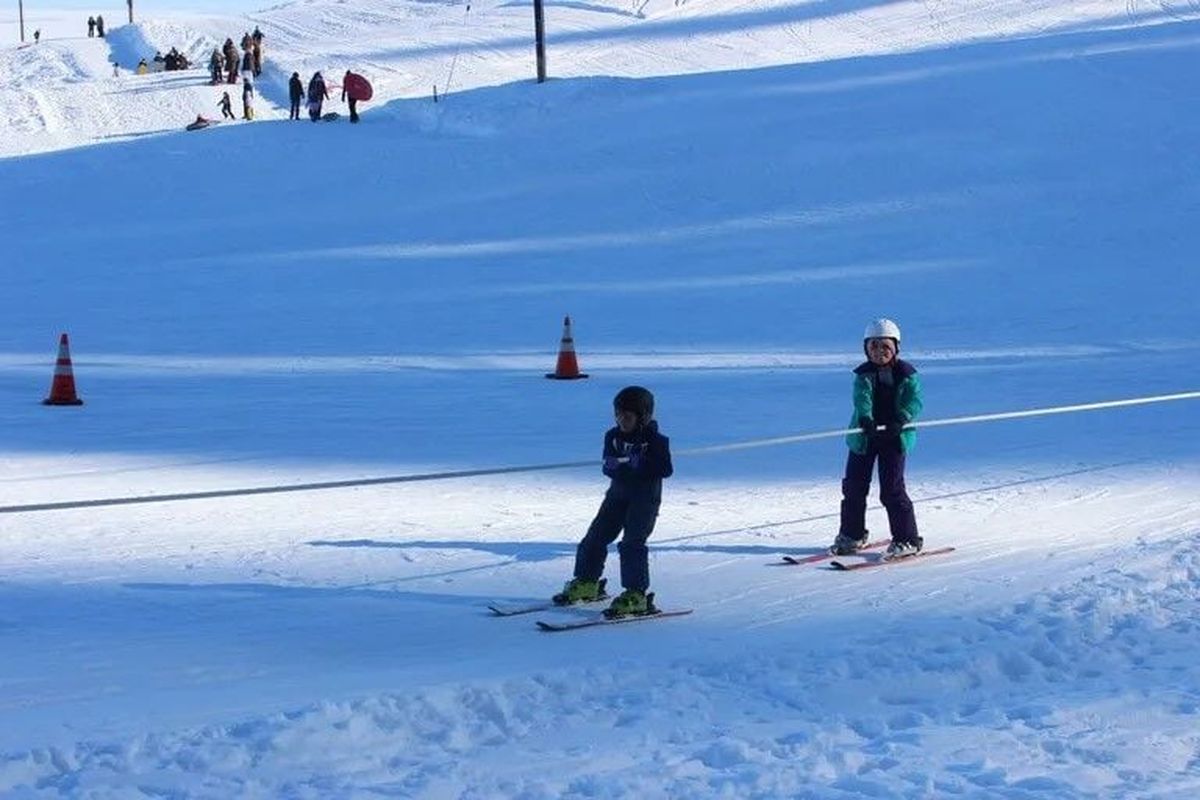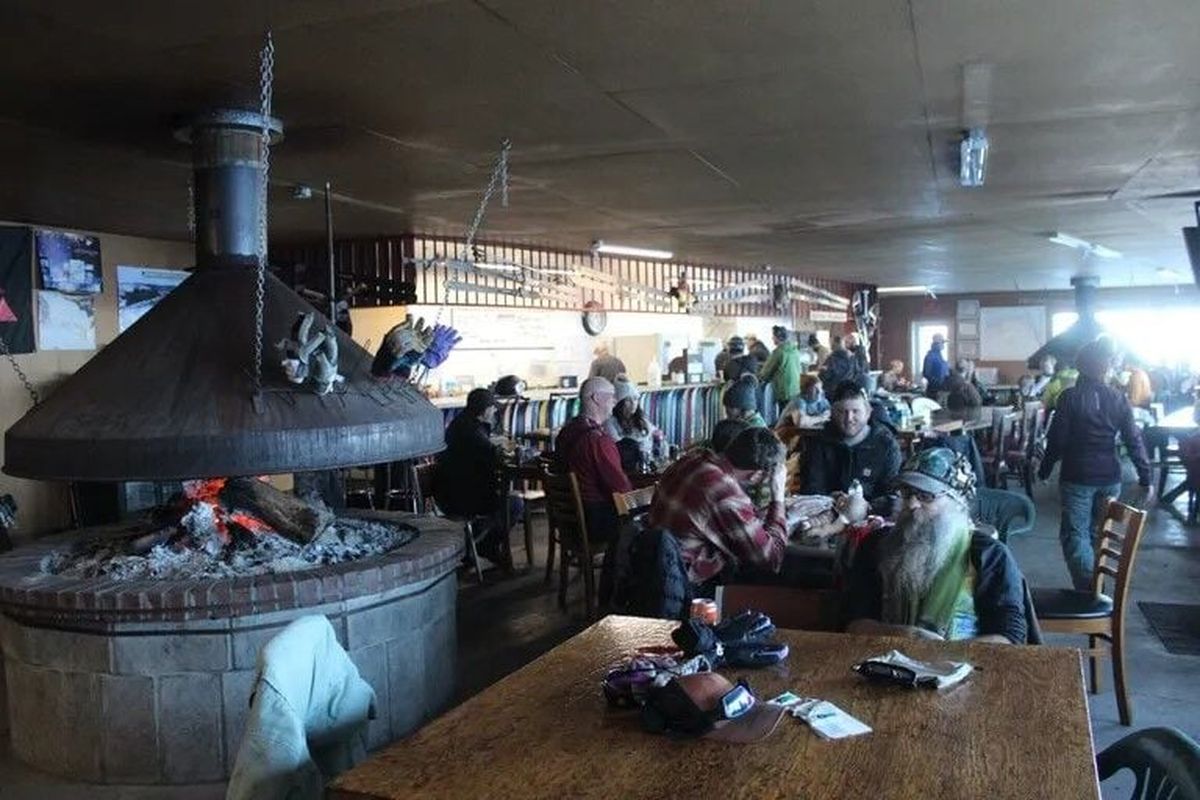WA’s Badger Mountain Ski Area boasts cheapest lift ticket in the West
Sledding and skiing are the name of the game at Badger Mountain Ski Area in Waterville, Wash., which boasts the cheapest lift ticket in North America. (Gregory Scruggs/The Seattle Times)
WATERVILLE, Wash. – The setting: 1938, winter, central Washington farm country. The snow-covered wheat fields are fallow. A group of locals has picked up the skiing craze – ski jumpers have been launching into the air in Leavenworth for a decade and there’s now a rope tow powered by a Ford V-8 engine pulling aspiring skiers up the hill at Stevens Pass – but they still spend much of the season playing poker until spring planting season comes.
According to “Reflections: Images of Our Past,” a community history published by the Wenatchee Valley College Foundation, the women of Waterville prodded the townspeople to do something more constructive than shuffling cards all winter, so the residents cast their eyes 4 miles away to a north-facing hill with a decent pitch on the side of Badger Mountain. They began tinkering with assorted car and tractor parts, cobbling together their own engine-powered contraption that would haul anyone brave enough to try up the side of the hill. Thus Badger Mountain Ski Area was born.
Nearly 90 years later, the original rope tow has been retired – it surely wouldn’t pass state inspection today – but the no-frills spirit lives on. When Old Man Winter cooperates, as he has this season, the 50-strong volunteer operation led by the Waterville Lions Club fires up the engines every weekend and holiday Mondays from 11 a.m. to 4 p.m. At $15 per person, cash only, Badger charges a price for sliding on snow that’s tough to beat, especially in the Northwest.
With a 33-inch base as of Monday, the most recent day it opened, this winter has delivered a bounty. Badger opened in December, earlier than usual, and should have enough snow to keep running through March.
If you’ve been conditioned by the social media-fueled stoke powering the billion-dollar Ikon and Epic Pass global ski industry, dial your expectations back several decades. The parking lot holds a few dozen cars; after that you’re parking on the side of a road next to a farmer’s field. It’s a quarter-mile trudge through snow to the lodge. Along the way you’ll pass eager sledders, who, for $10, access what might be the state’s best sledding hill where it seems like you’ll slide all the way to the Palouse before coming to a stop. The lodge is cramped, but cozy, and smells heavily of grease from the daily lunch special: $8 for a burger, chips and soda. There are no lessons or rentals.
The terrain is modest. A lone T-bar lift rockets 800 vertical feet to the top of a surprisingly stout hill owned by the city of Waterville, with a pitch as steep as 35 degrees in places, and three marked runs down. A rope tow runs about halfway up the hill, while another serves a gentle bunny slope. The daily skier count typically numbers in the dozens.
But to make the three-hour trip from Seattle is a chance to travel back in time. As Snohomish resident Andy Gail said between nonstop T-bar laps – his goal for the day was to average 50 cents per run – “this is the essence of skiing.”
These community-run ski hills were once common across the country’s northern tier, from New England to the Inland Northwest. Often little more than a rope tow, most faded into oblivion with the advent of commercial ski areas featuring modern chairlifts and lodges. Washington alone counts 46 lost ski areas. Only a handful of surface lift-only outposts open to the public remain: Hurricane Ridge, Echo Valley Ski Area, Leavenworth Ski Hill and Meany Lodge. (For the second consecutive winter, Sitzmark Ski Area in Tonasket did not open, throwing the future of the Okanogan County hill into doubt.)
Like its peers, Badger faces headwinds. It runs on a shoestring $15,000 annual budget, lean enough to survive bad winters – last year, Badger only opened two days – but liability insurance is hefty and the lifts must pass the same state inspections as state-of-the-art new chairlifts.
“It’s just a miracle every day this place runs,” said general manager Steve Hickman, 69, a retired general contractor who has steered the ship for 25 years. He oversaw the 2001 installation of the T-bar, a Doppelmayr number he picked up secondhand, and stands behind the Rube Goldbergian rope tow whose guts are on display for all to see.
“It’s all old equipment, but it runs well,” said wildland firefighter Ben Dronen, who at 41 is Badger’s youngest volunteer, while manning the rope tow. Ditto goes for some of the skis on display at a hill where Carhartt vastly outnumbers Arc’teryx. “You’ll see anything from the late ’70s to modern gear,” he said.
Hickman understands that Badger Mountain can’t compare with what ski areas nestled in the Cascades offer. He faithfully spends his weekends toiling in Badger’s cold shadow so families can frolic while he gets his kicks during the week, logging 100 days per season at Mission Ridge.
But to his mind, Badger is like a ski swap, serving a vital function in promoting affordable access to snow sports among a broad swath of the population. He analogized Badger’s role to a wading pool.
“You start there and when you’re big enough you can put your floaties on and go out to the deep end,” he said.
“This is where young people start. Next thing you know, they’re skiing at the big ones.”

